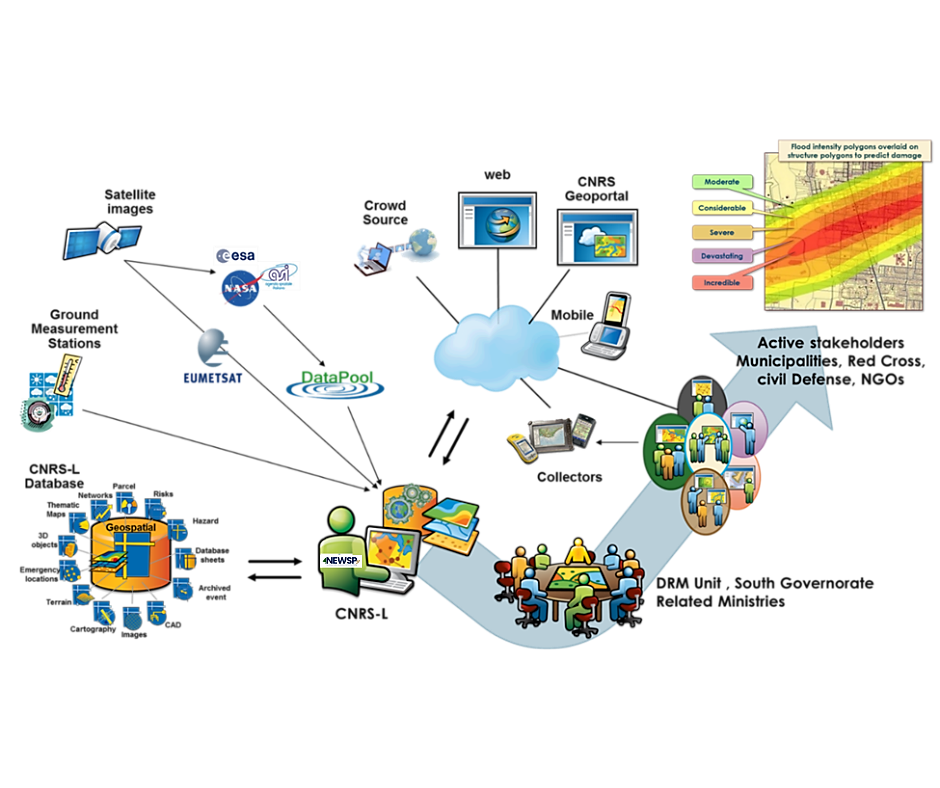Our History
Consequently, a Disaster Risk Response Framework Plan has been recently put forward in Lebanon that established a Disaster Risk Management Unit under the Prime Minister’s Office with coordination responsibilities in the prevention and preparedness phases of risk management. Taking this fact together with the stressing need for capacity building in disaster risk mapping and management, and to scientifically assist the DRM Unit, the Lebanese National Council for Scientific Research (CNRS-L) established, in 2015, under the framework of the CAPWATER and in cooperation with the CIMA foundation (Italy) a Sustainable Natural Resource management platform and early warning system equipped with skilled experts, hardware and software, internet-based satellite receiving station and associated infrastructure for the production and storage of geo-information in order to properly assist both emergency operations, implement proper prevention and preparedness actions, serving stakeholders and decision makers for disaster risk management. The SuNaR established cooperation with the IRC climate centre (Storm and Heat wave forecast), CIMA institute (Forest Fires and Floods), IMWI (Drought Monitoring).
Aim & Scope
Climate-related hazards such as droughts, floods, landslides, and wildfires pose significant challenges to Lebanon's socio-economic development and human well-being. The National Early Warning System Platform aims to address this urgent need by establishing a people-centered, impact-based multi-hazard early warning system (MHEWS). Through improved monitoring, prediction, prevention, and response capabilities, the NEWSP seeks to strengthen Lebanon's national and local capacities to mitigate the impacts of climate-related extreme events. By disseminating accurate warnings, promoting community engagement, and enhancing disaster risk knowledge, the NEWSP work on building a resilient society that is better prepared to face the challenges of the future.

